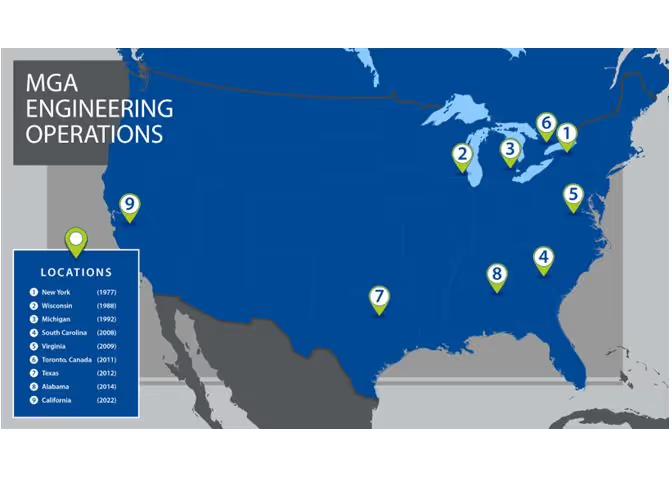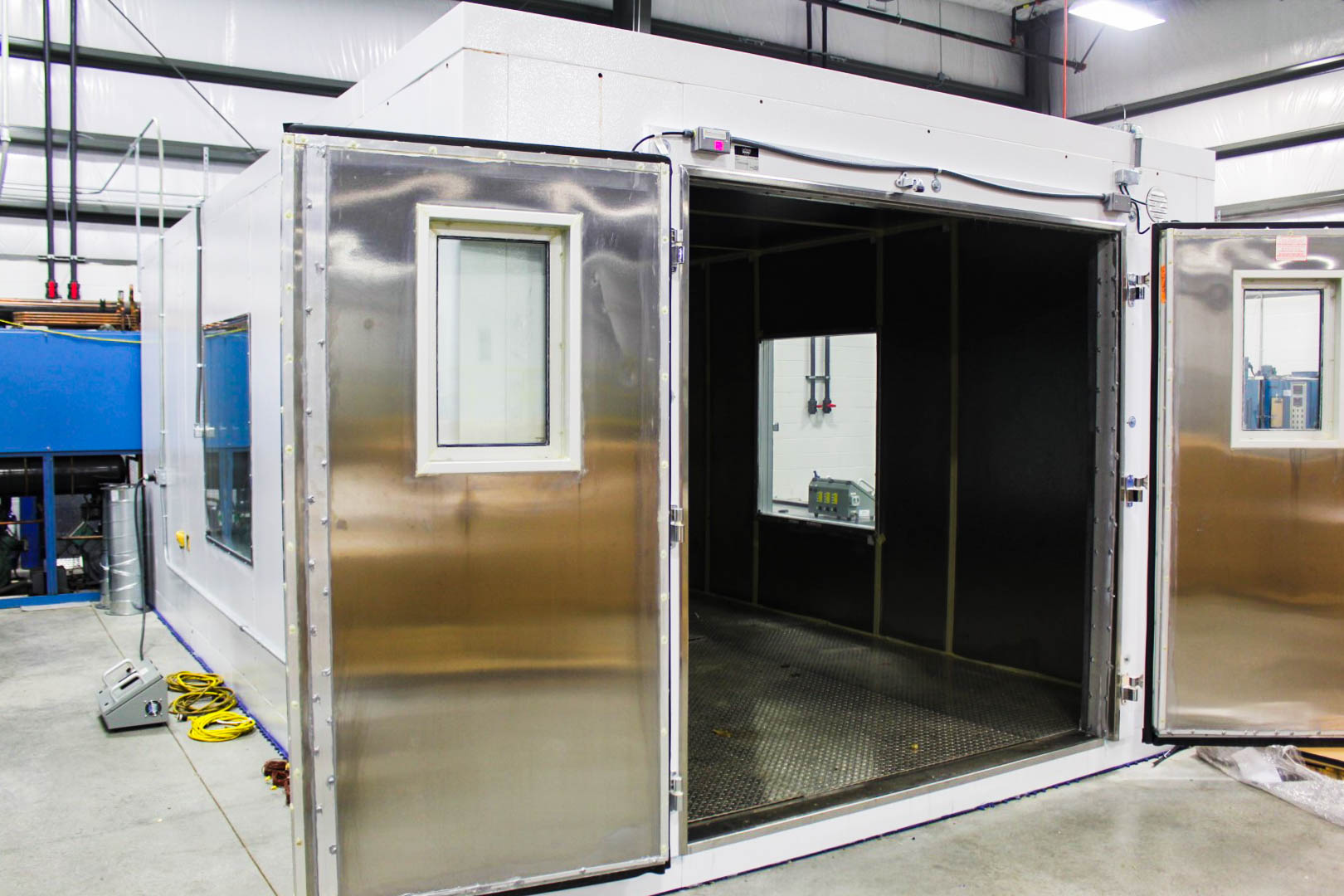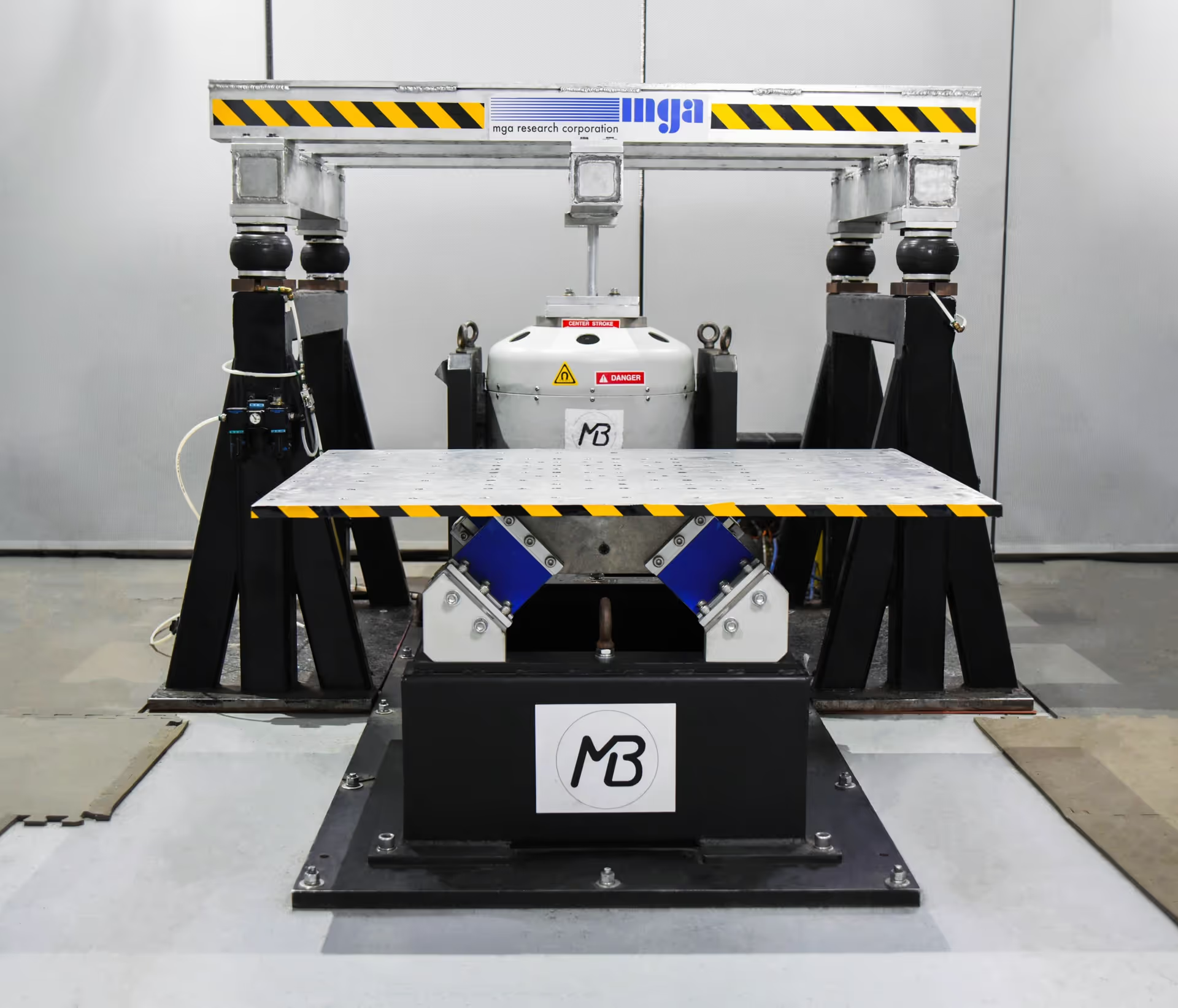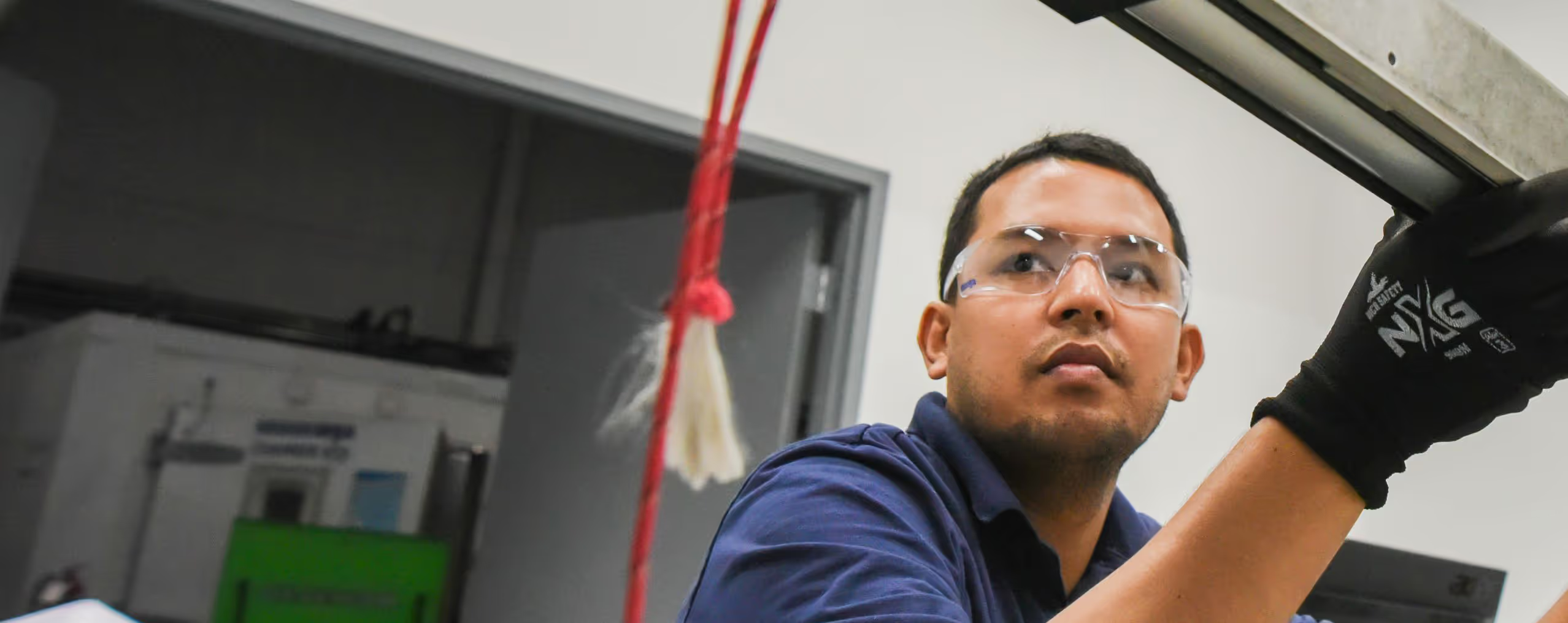
Automotive Interior Testing
MGA Research Corporation offers comprehensive testing services for automotive interiors, ensuring that components meet the highest standards of comfort, safety, functionality, and durability in modern vehicle design.
Quick Overview


Comprehensive Interior Testing Services
We offer extensive capabilities for all automotive interior components ranging from material characteristics, environmental, and dimensional analysis to vibration, noise, and safety testing.

Multi-Location Testing Network
MGA offers testing services across nine North American laboratories, offering proximity and flexibility to OEMs and suppliers in key industry regions.

Diverse Component Expertise
We test a wide range of interior components, from instrument panels and door panels to headliners and trim, covering all aspects of vehicle interiors.

Environmental Simulation Capabilities
We utilize over 100 environmental chambers across our facilities to simulate various real-world conditions and assess component durability.

Vibration and NVH
MGA utilizes over 50 electrodynamics shakers and multi-axis simulation tables to help engineers reduce the effects of Noise, Vibration, and Harshness.

Interior Occupant Safety
We offer complete interior safety test capability including FMVSS, ECE, and Global NCAP protocols.

Full DVP&R Project Management
Let our project management team help streamline your validation efforts.
Why Interior Testing Matters in the Automotive Industry
Interior testing plays a crucial role in the automotive industry as it directly impacts vehicle quality and customer satisfaction. Rigorous testing ensures that seats, dashboards, headliners, and other hard or soft trims meet durability, comfort, and performance standards. Along with the testing related to occupant comfort, manufacturers must evaluate for safety and regulatory conformance. Failures in interior components can lead to costly recalls, warranty claims, and disgruntled customers. The need for robust interior testing continues as manufacturers explore more exotic materials and new technologies.
MGA's Approach to Interior Testing
With over 45 years of automotive testing experience, MGA has experience in nearly all interior tests. Leveraging cross-functional teams and close relationships with OEMs and suppliers, MGA strives to provide an all-in-one testing service.
Automotive Interior Components We Test
Interior testing can be roughly split between assembly-level and component-level tests. These categories all have different, sometimes overlapping, needs that require specific equipment and expertise. A growing area of testing is centered on new user interfaces and safety features in the vehicle.
Primary Interior Assemblies
- Instrument panels and dashboards
- Door panels and trim assemblies
- Center consoles and storage systems
- Steering wheels and control surfaces
- Seats
Secondary Interior Parts
- Headliners and pillar trim
- Floor coverings and carpets
- Interior lighting components
- HVAC vents and controls
- Decorative trim and accent pieces
Emerging Interior Technologies
- Touch surfaces and haptic controls
- Display integration components
- Active safety interior features
Functional Testing Methods
Mechanical Performance Testing
Through the use of pneumatic, hydraulic, and robotic cycling, real use cases can be replicated. These tests serve to identify failure modes, robustness, and overall quality.
- Switch and control cycling – Can be a combination of electrical and mechanical cycling to evaluate the switch and controlled components
- Mechanism durability – Common examples are gloveboxes, armrests, cupholders, center consoles and seats
- Haptic feedback consistency – Using a controlled load (Robot, UTM, or electric cylinder) a force-displacement graph is generated
- Component integration testing – Broad category involving assembly, fastener, functionality and fitment testing.
Electrical Performance Testing
With the increasing inclusion of electronic controls in vehicles, the need for testing electrical systems has also grown. This can include direct voltage control of motors, custom CAN/LIN programs, and switch/sensor testing.
- Motor Control – Tests adjustment motors in their actual use case, typically controlled on a set cycle time. Also used to evaluate thermal limits of motor
- CAN/LIN Programs – Utilizes purpose written programs to control actuators or systems in a defined manner for testing purposes.
- Seat Heaters – Can be cycled via PWM or vehicle controls to test efficiency, durability, and performance.
Also included in testing methods are emissions and air quality testing; environmental and durability testing; and safety testing. For more information on these testing types, please visit the respective capabilities pages.
Testing Standards and Specifications
MGA has a long history of working in various industries; as such, they have exposure to a variety of standards and specifications. These range from international standards, industry specifications, and OEM procedures.
Testing Equipment and Systems
MGA has the necessary tools and equipment for interior testing and validation. A wide variety of systems and tools are essential to encompass the breadth of testing that vehicle interiors require. Below is a brief overview of what may be required.
Environmental Testing Machines
Ranging from small reach-in chambers to large multi-vehicle drive-in chambers, environmental test chambers play a core role in interiors testing.
- Climate chambers – Capable of temperatures ranging from -40°C to 140°C
- UV testing equipment – Used to simulate solar exposure
- Humidity generators – Support equipment used to generate additional humidity in specific areas or large volumes.
- Targeted Temperature Control – Includes IR heat lamps, heater tape, and cold guns

Mechanical Testing Systems
There is an array of equipment used for testing tactile response, kinematic function, and mechanical durability. The list below is just a small sample of equipment MGA uses to test interiors.
- Universal testing machines – Used to perform tensile and compression tests
- Impact testing apparatus – includes ball drops, pendulum, and pneumatic impacts. Can be performed at various temperatures.
- Pneumatic Cylinders – Often coupled with extruded aluminum for custom lifecycle setups, actuators are used to simulate user actions.
- Electric/Hydraulic Actuators – Similar to pneumatic actuators but capable of providing force and displacement-controlled loadings
- Robots – Programmed to follow realistic occupant use or pathing for lifecycle purposes. Also, utilized in rigidity and strength testing.
Quality Assurance and Testing Solutions
Beyond MGA’s extensive equipment capabilities, MGA also offers many complementary services. With experience in program management of all sizes and quality testing services, MGA provides a consistent and reliable testing experience.
Comprehensive Testing Programs
- Full DVP&R management
- Multi-phase validation
- Risk-based testing strategies
- Cost-effective test planning
High-Quality Testing Services
- ISO 17025 accreditation
- Calibrated equipment
- Traceable results
- Expert technical support
With ten facilities positioned across North America, MGA offers a unique advantage through our extensive selection of test equipment and capabilities to support virtually any project need. Our team works closely with customers to identify the most efficient and technically sound solutions, ensuring projects are completed with precision and speed. Contact us today for testing inquiries.


Ready to Get Started?
Let's discuss your testing needs and how MGA can help. Our team is ready to provide the expertise and solutions you're looking for.
